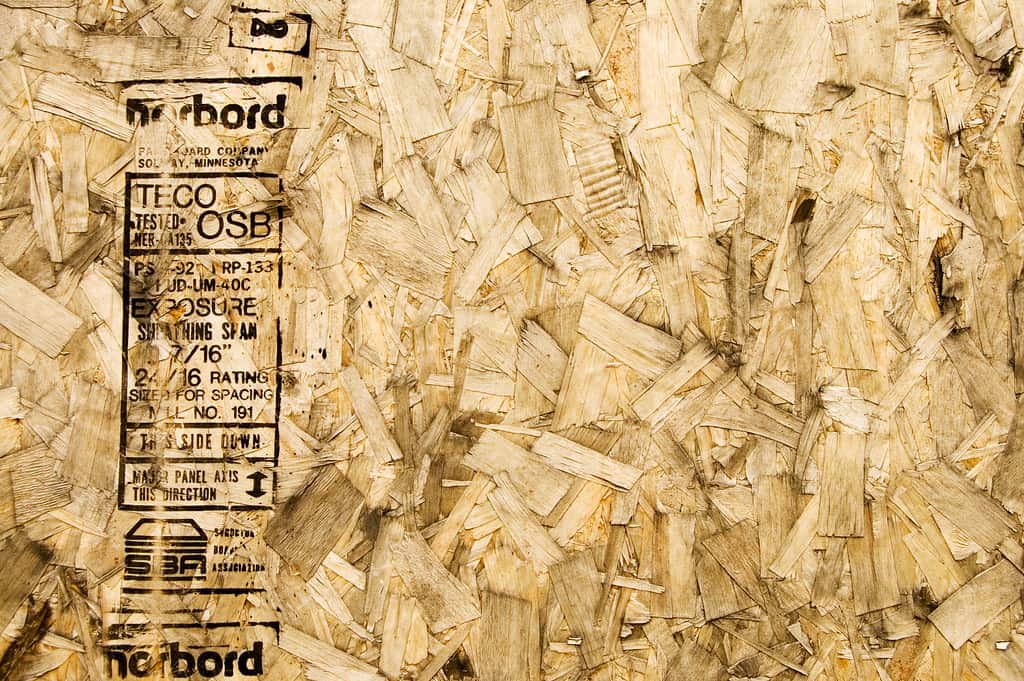
When I built my first bluebird house, I had no idea what type of wood to use. My dad and I just found some spare plywood from the backyard and started building! Honestly, that worked really well, but the nest box started showing a lot of wear and tear after a year or two, and we switched to a new nest box. That convinced me to look for the best quality materials when building a nest box. So, what’s the best type wood to use for a bluebird house?
Based on the nest box recommendations of ten different bluebird organizations in North America, the best type of wood to use for a bluebird house is cedar. Cedar is decay-resistant, insect-resistant, and longer-lasting than other types of wood. These three factors make it an ideal choice when building your own nest box.
In this article, I will explain why cedar is arguably the best type of wood to use for a bluebird house. I’ll go over a few alternative woods that you might consider using if cedar is not an option. Then, I’ll indicate some types of wood that you should definitely NOT use for your bluebird house.
The above photo by photogism is licensed under CC BY-NC 2.0
Best Wood for Bluebird Houses: What Do The Experts Recommend?
To find the most-recommended type of wood for bluebird houses, I looked over the nest box plans of eleven major bluebird conservation organizations in the US and Canada. These are the organizations I looked at:
- North American Bluebird Society (link)
- Michigan Bluebird Society (link)
- Audubon Society (link)
- Georgia Department of Natural Resources (link)
- Ohio Bluebird Society (link)
- Colorado Bluebird Project (link)
- Florida Bluebird Society (link)
- Texas Bluebird Society (link)
- Mountain Bluebird Trails Conservation Society, Canada (link)
- Bluebirds Across Nebraska (link)
- California Bluebird Recovery Program (link)
On their respective websites, each organization recommends either one, two, or three types of wood as the ideal type to use when building a bluebird house. Usually, they list one of their recommendations as their preference.
In the table below, I’ve listed each type of wood, from most-recommended to least-recommended by these organizations. Beside each type of wood are the organizations that recommend it. Here’s what I found:
Recommended Types of Wood for Bluebird Nest Boxes
| Type of Wood | Organizations that Recommend It |
|---|---|
| 1. Cedar (Red or White) | – Michigan Bluebird Society – Georgia Wildlife – Ohio Bluebird Society – Colorado Bluebird Project – Florida Bluebird Society – Texas Bluebird Society – Mountain Bluebird Trails Conservation Society (Canada) – California Bluebird Recovery Program – Bluebirds Across Nebraska |
| 2. Redwood (Cypress) | – North American Bluebird Society – Georgia DNR – Colorado Bluebird Project – Bluebirds Across Nebraska – Michigan Bluebird Society – Georgia DNR |
| 3. White Pine | – North American Bluebird Society – Audubon Society – Colorado Bluebird Project – Texas Bluebird Society |
| 4. Fir | – Mountain Bluebird Trails Conservation Society (Canada) |
So, based on the many recommendations from conservation organizations, cedar is clearly the best wood to use for a bluebird house. Let’s find out why cedar is such a popular choice.
Why Cedar Is the Best Choice for a Bluebird House
To understand why cedar, particularly Western Red Cedar, is the best choice of wood for a bluebird house, consider the following quote from Lumber.com:
Western Red Cedar in particular is prized for its naturally occurring moisture-resistance, decay-resistance, and insect repellent. Not only is it durable and stable, but its aesthetic beauty makes it ideal for a wide range of interior and exterior projects.
Lumber.com (source)
Moisture-resistance, decay-resistance, and insect-resistance – these are the qualities that make cedar the best wood to use for a bluebird house. It’s a durable wood that protects bluebirds from the elements. Let’s look at each of these three qualities individually.
Cedar Is Moisture-Resistant
If a bluebird house absorbs rain water and moisture from the air, over a few season’s time, the box will warp and it will become unfit to use. This is what happened with my first bluebird house! I’m pretty sure that we used untreated plywood. Without coating it with a water-proofer first, the plywood nest box was warped and weathered in just a season or two.
If only we had used cedar! Cedar is naturally moisture resistant and thus very attractive as a birdhouse wood. You won’t have to worry about the rain taking a toll on your nest box.
Cedar Is Decay-Resistant
Cedar is also decay-resistant (or rot-resistant). Pine, on the other hand, is a type of wood that rots rather quickly (source). This is important to take into consideration when thinking about how long your nest box will last. Making your nest box out of cedar instead of another type of wood could add a few seasons onto the life of your bluebird house, just thanks to its decay-resistance.
Cedar Is Insect-Resistant
Long known for its insect-repelling properties, cedar wood has historically been made into moth-balls to repel moths, and cedar oil to repel a variety of insects (source). Since blow flies and their larvae are a common problem for bluebird nests, the issue of insect-resistance is important.
While choosing to make a nest box out of cedar won’t definitively solve your blow fly problems, it could deter pests and parasites from entering your nest box.
These three qualities are enough for me to label cedar as my “bluebird house wood-of-choice.” But, what if cedar isn’t available for you?
Alternatives to Cedar: Four Other Types of Wood You Can Use for Your Bluebird House
1. Redwood (Cypress)
Redwood, a type of wood in the Cypress family, is a great alternative to cedar when choosing a type of wood for your bluebird house. This wood is also decay-resistant and durable, like cedar, and it comes highly recommended by many bluebird conservation groups.
2. White Pine
This type of wood is recommended by four of the eleven organizations that I researched while writing this article, including the North American Bluebird Society. So, why do some organizations actively say NOT to use pine for bluebird houses?
For one, white pine is not as durable as cedar or redwood. That alone might be reason enough not to use it for some. Another reason is that pine needs to be treated with a water-proofing product before it’s used, or else the nest box will absorb water when it’s outdoors and risk becoming warped. But if white pine is a convenient type of wood for you, go ahead and use it!
White pine is perfectly fine to use when building a bluebird house, as long as you treat it with a water-proofer first. The North American Bluebird Society recommends using Thomson’s Water Seal to make your white pine nest box waterproof. You can buy Thomson’s Water Seal in 1.2 gallon containers on Amazon here.
3. Exterior Grade Plywood
Exterior grade plywood is also fine to use for your bluebird nest box, as long as it is untreated. Make sure it’s not pressure-treated or it could be toxic to bluebirds. If you choose to go with exterior grade plywood, treat it with water-proofer first before building your bluebird house, just like with white pine. (Here’s a link to the water-proofer I recommend on Amazon).
4. Fir
Of the eleven organizations that I researched, only one recommended using fir. Just because it’s not recommended very often, doesn’t mean it’s a bad wood to use. Types of wood like Douglas Fir are strong, durable, non-toxic woods that are frequently used in the construction industry. As such, it’s perfectly fine to use fir to build a bluebird house.
Two Types of Wood You Shouldn’t Use in Your Bluebird House
1. Pressure-Treated Wood
Pressure-treated wood is wood that has been chemically-treated to improve the wood’s rot-resistance and insect-resistance. Unfortunately, the chemicals found in pressure-treated wood are potentially toxic for bluebirds, so this type of wood should never be used to build a nest box.
2. Particle Board
Particle board (also known as chip board) is a manufactured wood product made out of compressed wood chips. This is often used in construction as a low-cost alternative to plywood. Since particle board tends to expand and absorb moisture when left outdoors, it is not a suitable material for building a bluebird house. Choose cedar, or something more durable from the list above.

Photo by paul goyette, license: CC BY-NC-SA 2.0
Conclusion
Cedar is the clear choice when is comes to the best wood to use for a bluebird house. It’s water-resistant, decay-resistant, and insect-resistant. There are also many great alternatives like redwood, pine, exterior-grade plywood, and fir. Whatever you choose, as long as it’s not pressure-treated plywood or particle board, you should be fine.
If you want to make your own bluebird house, click here for a free plan from the North American Bluebird Society.
And if you just want to go ahead and buy a ready-made cedar bluebird house, check out my Recommended Tools page for the nest box that I recommend.
Thanks for visiting Bluebird Landlord!


